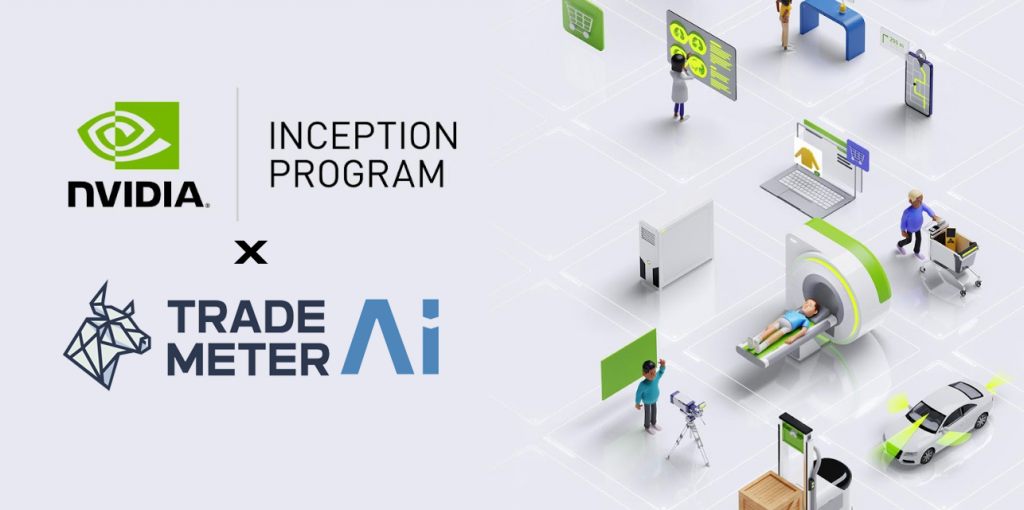20 Good Suggestions For Choosing Ai Investment Platforms
Wiki Article
Top 10 Tips For Automating And Keeping Track Of Stock Trading From Pennies Up To copyright
In order for AI stock trading to be successful, it is essential to automate trading and keep a constant eye on. This is particularly true when markets are moving quickly such as penny stocks or copyright. Here are 10 top suggestions for automating and monitoring trades to ensure the performance.
1. Clear Trading Goals
TIP Make sure you know your goals for trading. This includes risk tolerance levels returns, expectations for return, asset preferences (penny stock, copyright, both) and many more.
Why: Clear goals will guide the selection of AI algorithms, risk-management guidelines and trading strategies.
2. Use a trusted AI Trading Platform
Tip #1: Use AI-powered platforms to automatize and connect your trading with your broker or copyright exchange. Examples include:
For Penny Stocks: MetaTrader, QuantConnect, Alpaca.
For copyright: 3Commas, Cryptohopper, TradeSanta.
The reason is that success with automation requires a stable platform that has solid execution skills.
3. Customizable trading algorithms are the focus
Tip: Choose platforms that let you create and customize trading algorithms that you can tailor to your specific strategy.
Why? Customizable strategies ensure that the strategy you choose to use is compatible with your specific trading style.
4. Automate Risk Management
Create risk management tools that are automated like stop-loss orders, trailing-stops and take-profit levels.
The reason: These security measures ensure your portfolio is protected from large loss, especially when markets are volatile, such as copyright and penny stock.
5. Backtest Strategies Before Automation
Before going live, you should test your automated system on previous data to assess the effectiveness.
Why? Backtesting allows you to test the strategy to ensure that it is able to meet its potential. This helps reduce the chance of losing your money in live markets.
6. Regularly Monitor Performance and Adjust the settings
Although trading is automated, it's important to monitor the performance of your trading regularly to detect any issues.
What to monitor How to monitor: Profit, loss, slippages and whether the algorithm is aligned to market conditions.
Why? Continuous monitoring makes sure that adjustments are timely implemented when market conditions change and the plan remains successful.
7. Flexible Algorithms to Implement
Tip : Pick AI tools which adapt to market changes by altering parameters based on the latest information.
The reason: Since markets change constantly and evolving, adaptive algorithms can be employed to improve strategies for penny stocks or cryptos in order to match new patterns and volatility.
8. Avoid Over-Optimization (Overfitting)
Over-optimizing a system could lead to overfitting. (The system works best in backtests but fails under real-world circumstances.
Why: Overfitting reduces a strategy's ability for generalization into market conditions in the future.
9. AI for Market Analysis
Tip: Use AI to detect odd market patterns or unusual abnormalities in data (e.g. sudden increases in the volume of trading news sentiment, stock market volatility, or copyright whale activity).
The reason: Being aware of these signals early can help you adjust automated strategies prior to a major market change happens.
10. Integrate AI into regular alerts, notifications and notifications
Tip Make sure you set up alerts in real-time for major market events trading executions, major market events, or changes in the algorithm's performance.
What are the reasons: Alerts alert you of market changes and enable rapid manual intervention (especially in volatile markets such as copyright).
Cloud-based solutions are an excellent option to expand.
Tip: Make use of cloud-based trading platforms for more capacity, speed, and the capability to run different strategies at once.
Cloud solutions let your trading system operate 24 hours a days and 365 days of the year and at no cost. They are especially useful for copyright markets since they are never closed.
You can profit from AI-powered trading by automating your strategies and monitoring them frequently. This will minimize risks and improve overall performance. See the most popular read review on ai day trading for site recommendations including ai trading app, best ai stock trading bot free, copyright ai, stocks ai, copyright predictions, ai for trading, using ai to trade stocks, best ai stocks, free ai tool for stock market india, ai trading app and more.

Top 10 Tips For Combining Ai With Fundamental Analysis To Help Stocks, Stock Pickers, And Investments
The combination of AI analysis with fundamental analysis improves the accuracy and efficacy of stock-pickers. The combined approach can be utilized to make investment choices. Here are 10 ideas to integrate AI and fundamental analysis to boost stock predictions and investment
1. Data collection using AI and its processing
Use AI to automate the collection, cleaning and analyses of essential data, such as earnings reports and financial statements.
Why: AI can quickly sift large amounts of data in order to find trends or key metrics. It saves time, and ensures that important information is overlooked.
2. Incorporate Key Financial Ratios into AI Models
Tip: Feed AI algorithms fundamental metrics, like the ratio of P/E/P/B, debt/equity ratios, and free cash flow.
These ratios can be used to assess the strength of a business's finances and the value of its assets. AI can process this data more efficiently. It can detect patterns that human beings might not be able to detect.
3. Combining AI's predictive power with fundamental knowledge
Tip: Use AI to improve forecasts based on conventional fundamental studies, such as forecasting the price of stocks by using historical performance data or forward-looking fundamental metrics.
Why: AI models can include more variables and intricate patterns than traditional models, improving predictions based on fundamental analysis.
4. Automatic Earnings Calculations as well as valuation models
Tips: Make use of AI to enhance and automate earnings estimates as well as valuation models (such as Discounted Cash Flow models), by factoring in the latest and past data.
The reason: AI is able to quickly adapt models as new information comes to light. This helps to provide more accurate estimates of stock prices and forecasts.
5. Incorporate Macroeconomics Factors into the fundamentals of the company
TIP: Use AI to analyze macro-level fundamentals (e.g. earnings, company performance or management traits, etc.) as well as macroeconomic indicators. ).
The reason: AI is able to examine the effect that larger economic trends can have on a business's performance. This helps you predict the performance of stocks more accurately by understanding the external factors that may influence the business.
6. Make use of Natural Language Processing (NLP) to make News and Earnings calls
Tip: Combine unstructured, unstructured, and social data with basic company data by using NLP.
Why: NLP is a powerful tool that allows AI to gain insight and sentiment from qualitative data. This gives more context to essential metrics. For instance it could identify changes in management or the emergence of new challenges in the market, which could influence growth prospects in the future.
7. AI Real-time Processing and Long-Term Analyses
Tips: Make use of AI to monitor and analyze real-time market data while using the fundamentals of analysis to help guide long-term investment choices.
Why: AI can offer quick and efficient responses to market changes in real-time, whereas fundamental analysis can provide a longer-term view, which can result in a balanced investment strategy.
8. AI-Enhanced fundamental screening Identifies the opportunities that may be missed
Tips: Create AI models which can screen for undervalued/overvalued stocks by combining fundamental indicators with market behavior.
Why: AI can uncover hidden investment opportunities by detecting trends in markets that might not be obvious using traditional methods of fundamental analysis alone.
9. AI Insights to Fine-Tune Risk Management
Tip: Use AI to boost risk management by assessing a company's financial stability and predicting potential risks like liquidity issues or regulatory changes, based on its foundational data.
The reason: AI can help you safeguard your portfolio from risk of a downturn and also take advantage of fundamental value opportunities.
10. Regularly Reassess your models with the latest information
Tip: To refine your predictions and adjust your stock selections to make your predictions more accurate, feed constantly updated financial information, earnings data and macroeconomic indicators to the AI system.
The reason is because the financial information and market conditions are constantly changing and changing, it is essential to keep your models up-to-date to reflect the latest data. This will allow you to make the right stock choices.
Bonus: Use AI to Automate Portfolio Rebalancing
Tip : Leverage AI in order to track your investment portfolio and make adjustments based upon the fundamentals, for example when the organization's finances are declining.
Why: AI automates the process of portfolio rebalancing, using triggers that are fundamental. This ensures the optimal allocation with no manual intervention.
Combining AI with fundamental analyses can assist you in taking an efficient, data-driven approach to stock and investment selection. AI is better able to identify patterns, process huge amounts of data and adapt quickly when faced with new data. Fundamental analysis can provide you with the foundation you need to make long-term investment choices. This approach is a hybrid one that will allow you to make well-informed, timely, and efficient investment decisions. View the top rated ai for investing for website examples including best ai for stock trading, coincheckup, copyright ai bot, ai investment platform, stocks ai, ai stock analysis, trade ai, copyright ai trading, ai stocks, copyright ai bot and more.
